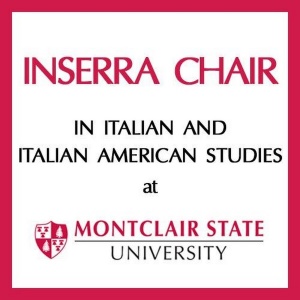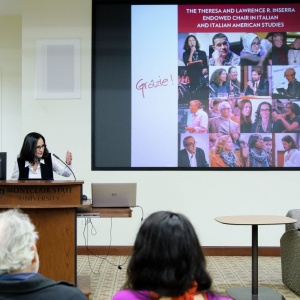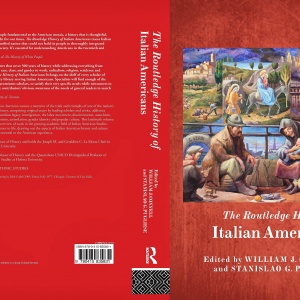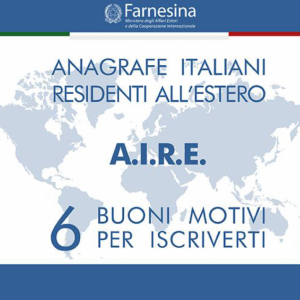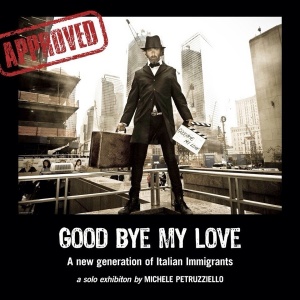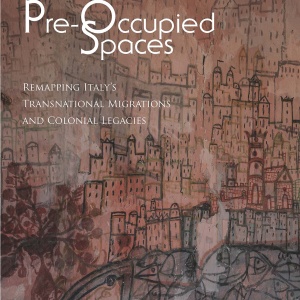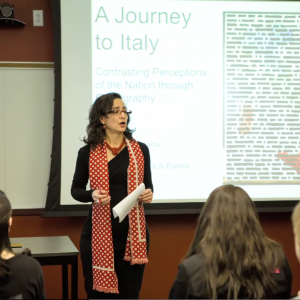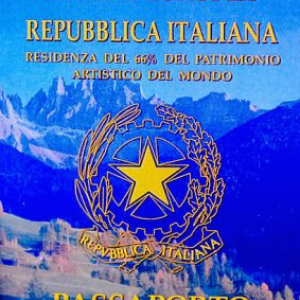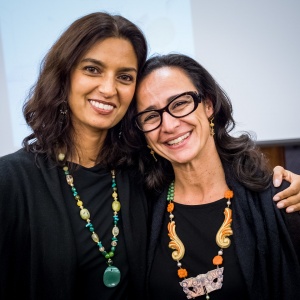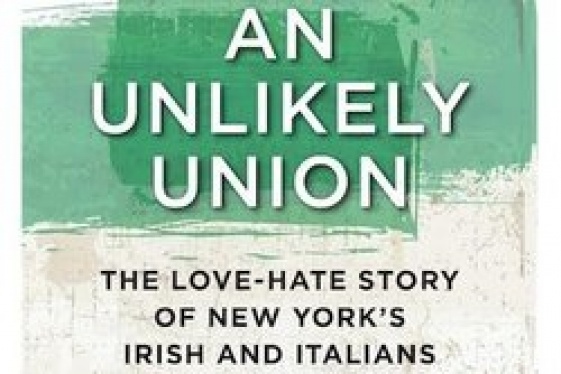
Teresa Fiore (Author of "Pre-Occupied Spaces: Remapping Italy's Transnational Migrations and Colonial Legacies")
La nuova emigrazione italiana verso gli Stati Uniti: incontriamo Teresa Fiore

Some scholars have studied the new Italian emigration to the United States. It's a very interesting topic, because it's obviously a different emigration in numbers, people and dynamics, compared to the one of 100 years ago: and yet, illuminating parallels can be identified. And the relationship between the heirs of the emigrants of the past, born Americans of Italian origin, and the new emigrants, born and raised in Italy, is also very interesting. We talk about this with a very welcome guest, Professor Teresa Fiore, who holds the Inserra Endowed Chair in Italian and Italian American Studies and has also written essays about this new emigration.
Professor Fiore, you hold the Inserra Chair in Italian and Italian American Studies, affiliated with the Italian Program and housed in the Modern Languages and Literatures Department at Montclair State University, NJ. Please tell us more about this wonderful program
This position is devoted to the promotion of Italian culture within a transnational perspective, sensitive to the history of migrations from and to Italy as well as the exchange of ideas, practices, and goods over the centuries in and out of Italy, with particular reference to the U.S. Since its inception in 2011, the Inserra Endowment has made possible on campus a vast array of activities: from the regular presentation of cultural events with established artists and scholars to the launching of innovative educational initiatives (scholarship-supported internships in the Made in Italy and Translation sectors as well as the only bridge course for high school students in the country), and the development of new research projects, including a current one about WWII, migration and food.
The Inserra Chair adopts an interdisciplinary approach that privileges collaborations on and off campus to enrich and challenge traditional perceptions of Italian culture. Unlike other centers of a similar nature that showcase Italian culture primarily for adult Italophiles, the Inserra Chair also actively engages young people throughout the education system in the appreciation of Italian culture produced within the country and in the spaces of its diaspora.
The cultural programs - an average of ten per year – are all free and open to the public and serve large audiences of both Montclair State University students and faculty and the residents of the NY/NJ area at large.
Over the years, major artists and scholars, from Italy and the U.S, including MacArthur Fellows, as well as Pulitzer-Prize, Ubu-Award and David-di-Donatello winners, have presented shows, lectures, exhibits, films, dance performances, etc. on a wide array of Italian/Italian American themes (Migrations; Futurism; Slow Food; Multi-Lingualism) and in many disciplines, from visual arts to music, fashion, art history, design, nutrition, architecture and history. U.S. and NJ premieres have been offered in both film and theater, with some being chosen as New York Times Critic’s Picks. Many programs have been presented in partnership with state, governmental, and top cultural institutions based in New Jersey, New York, Washington D.C., and Italy, and have been covered in the media.
Two major areas of focus for The Inserra Chair’s activities remain Italian Business/Made in Italy and Translation, which have defined an interesting balance between the traditional realm of arts and humanities and a more contemporary perception of Italy as a G7 country and one of the most industrialized in the world. In the former sector, the Inserra Chair has laid firm foundations for the development of pre-professional opportunities for students enriched by international experiences through establishing relationships with a network of local Italian companies, and by instituting a Critical Made in Italy series of panels and conversations. Other key areas of focus include programs about Sicily and about the relevance of the study of Italian.
You recently wrote a chapter of the amazing book The Routledge History of Italian Americans, edited by Stan Pugliese and Bill Connell. Your essay was called “Immigration from Italy since the 1990s”. Let’s start by asking you to please describe what AIRE is and a few general numbers about recent Italian emigration abroad
Yes. I have also written on the subject for New Italian Migrations to the United States, Vol. 2: Art and Culture Since 1945, edited by Laura E. Ruberto and Joseph Sciorra.
AIRE is the Record of Italians Residing Abroad. Technically, all Italians who reside in a new country for longer than 12 months should inform their nearest Consulate about their new address to be unregistered from the local records office in Italy and included in the AIRE list. This registration provides voting rights abroad for Italian elections and the ability to renew documents, among other privileges and services.
In reality, AIRE also includes those Italian citizens who are born abroad, and those who acquire the Italian citizenship in different ways whether through marriage or family origin. This latter aspect is very interesting to me because effectively it shows how Italy’s diasporic institutional vision combines both Italians living abroad and Italian descendants. This is quite surprising since the country has a complex relationship with its history of emigration, which is not an integral part of the common discourse nor the education system, and is not represented in a national museum, despite its gigantic size (roughly 27 million people left Italy between 1876-1976). Yet, AIRE produces, at least administratively, a shared space.
As of 2018, there are slightly above five million people registered in AIRE, interestingly equally distributed between Italians residing abroad and Italian descendants. In reality, it’s easier for the Consulates to keep track of people who acquire citizenship, since they are automatically added to AIRE, while Italians residing abroad have to actively decide to register. Estimates indicate that this latter group is substantially underrepresented: the number reflects half, if not one third, of the actual number of Italians who moved abroad. Italy’s contemporary emigration to the world, which is only growing (285,000 people in 2017 with a 50% growth over a decade according to Idos data), is vastly under-recorded in these statistics.
Why does the United States continue to play a fundamental role as a destination for Italian emigrants?
This country has always represented a magnet for immigrants for economic, cultural, and social reasons: profoundly interwoven with the fabric of Italian society due to cross-pollination in music, film and art; military and diplomatic alliances; as well, economic exchanges, the U.S. is a country to which Italians are also linked at an intimate level due to emigration.
Many Italian families have “a branch” in this country, by which I mean both descendants of relatives who emigrated a long time ago and/or people who have moved recently for study or work. The transnational nature of Italian families can be seen in many other parts of the world but it becomes particularly dynamic in the U.S. given the active circulation of people, goods, and projects across the ocean, in ways that are not comparable to Argentina or Canada, for example.
Despite the fact that a city like New York is much further away from Rome than London or Barcelona, and that it’s incredibly expensive and competitive, many people choose it to relocate for work and follow an opportunity or a dream, because it’s been done by so many before them. The tension towards and closeness to the U.S. has a long history.
It starts with a word that has always fascinated me, “La Merica,” (I am thinking of the beautiful 1911 short story by Maria Messina) where the name of an entire foreign country (erroneously referred to by the name of a continent, and ironically coined after an Italian, Amerigo Vespucci the explorer) is in part subsumed by its Italian article, and becomes a whole new space, made of dreams, fears, and expectations. It is a space that connects and separates at once.
Who are these new Italian immigrants to the US?
The common image of contemporary emigration as brain drain linked to academic research, managerial circulation, and artistic performance is only one piece of an intricate mosaic that includes also spouses who do not work, workers with common jobs, bi-national workers who rely on frequent trips or remote modes of work, and even people with unstable jobs in the restaurant business. Not to mention people who inhabit both categories, like being an artist and giving private classes under the table or working at a coffee shop to make a living.
While there are many glitzy stories that are often covered by the media to show the relevant role of Italy in today’s global economy and society, I am more interested in more invisible or less-talked about stories that reveal the complexities and contradictions of the emigration experience and hark back to older migrations (multiple circulation, struggles, precarious jobs) while revealing new traits (higher level of education even for simple jobs, the strong presence of women, reliance on fast transportation and easy communication). These new Italian immigrants are at once different and strangely similar to the old immigrants.
Some of the “new Italians” in the US we know are angry at Italy. Some of them are nostalgic. Some would like to come back. Some swear they’ll never do that. What’s your thought about this?
The perception of Italy, like that of any country of origin for immigrants, is part invention, part reality, and it is constantly mediated by outside factors like politics, and personal feelings, both subject to change over time. Italy is a place full of contradictions and it’s not surprising that there are strong reactions to it among emigrants, whether in terms of desire to return or to stay away from it. What interests me is the fact that despite its long history of emigration, Italy has not created the conditions for a circular diaspora, where return is a temporary or permanent option with specific incentives. The opportunity to go back for work-related projects or to move there would probably tame the strong feelings of nostalgia or rejection, and place Italy in a more realistic position able to counteract that of “a paradise inhabited by devils,” to borrow loosely from Benedetto Croce. The risk for the country is to become a frozen postcard, coveted by visitors, but not necessarily inviting or accessible to those who want to live and work there, including its own relocated people who entertain the idea of returning.
In your chapter of The Routledge History of Italian Americans, you tell three stories about new Italians, each representative of a pattern. The first one is about Clarissa Clò and, among other things, cites the role of the Italian Studies Departments.
Clarissa Clò’s story was important for me for two reasons. First of all, she is a professor of Italian, an often forgotten category in the discussion of both fairly recent Italian immigration to the U.S. and in the institutional discourse about Italian research in the U.S. The latter usually embraces scientists and inventors but quite systematically excludes the contribution of Italian Studies Departments, as if research about Italian artists and writers were not as relevant as that of chemistry or physics, when in actuality the cultural industry in Italy has a pivotal role. The erasure of the field from the public discourse glosses over the substantial contribution of professors of Italian Studies for the country: the promotion of the language and the culture, the hosting of Italian cultural events that often brings artists and scholars from Italy, and the various initiatives taking students to Italy or finding internships for them in Italy. These activities speak to the ambassador-like role of Italian Studies professors, which is not automatically the role of an Italian researcher in a U.S. university’s biology lab, for instance.
Clò’s story was also critical to talk about another silent story, that of emigration linked to sexuality: being gay in Italy has always been a harder experience than in the U.S. and today even more so than ever, at a time in which the “normative” family has become a reason to exclude and condemn. An overview of “new Italians” in the U.S. should then include Italians who chose this country to be able to have a family of their own, where adoption is an option rather than forced (complex and expensive) artificial insemination as it is in Italy. Clò’s American Dream is hardly conventional in this respect, and yet one of the many forms in which Italians are able to pursue not just professional but also personal gratification.
Davide’s story, instead, is about the problem of legal papers
Davide’s visa expires, and overnight he becomes “irregular.” Since he refuses to return to Italy, due to a general aversion to the country, his only option is that of securing an arranged marriage, which he is able to do, and then exercise enough patience through the process with his “wife” and the red tape. His story, which has a happy ending with first a green card and citizenship later, offered me the opportunity to delve into the world of undocumented Italians abroad (roughly 500,000 according to a 2014 study), the majority of which live in the U.S., and NYC in particular. Several aspects of this phenomenon are striking to me: Italy has become obsessed with “clandestini” but oddly ignores the fact that some recent Italian emigrants find themselves in an undocumented position when they overstay their visas. Also, since it considers Italians as professionally integrated immigrants, the U.S. does not see them as protagonists of “underground” lives related to the lack of papers, and as such does not check on them as much as other groups regarding arranged marriages or ID’s. Finally, Italians were historically labeled as WOPs (without official papers), a derogatory nickname that created the stigma of non-belonging all the way to WWII. It’s ironic that today, even among educated and financially secure Italians, there are “WOPs.”
Finally, Michele Petruzziello’s story lets you address the issue of the talented Italian professionals who cross the ocean looking for a better future
Michele’s personal story is that of a freelancer who was able to secure and maintain work in the U.S. from the beginning in his own sector, TV news footage production. Yet, as a person who came in touch with many “new Italians abroad,” he became aware of the broad diversity characterizing the current inbound flow, and has been very intent on documenting it as a photographer but with an original twist. His Italian immigrants are actors, teachers, journalists, business owners, freelancing artists, professionals holding secure as well as precarious positions: Michele places them in spaces and with props that are linked to their work, but dresses them as past immigrants going through Ellis Island in the early 1900s. The juxtaposition between their current experience and the clothes that they wear - made by Michele himself - creates a mental short-circuit. Regardless of their economic position, these people “wear” the legacy of the immigrant experience, and represent its most recent instantiation as part of a continuum.
From our particular point of view here in Italy, even if improvements have definitely been made, we see a mutual acceptance of the cultural differences between Italians recently emigrated to the US and the Italian Americans. Maybe, sometimes, they seem like two branches of a family that rarely speak to each other and mix respect for the same roots with hostility for a different way of living these roots. What do you think?
This issue has become a bit of an impasse and, like all impasses, needs some new actions to create a more productive discourse. I have always found Italians’ limited knowledge of the country’s emigration abroad with its internal mechanisms, practices and symbols a considerable obstacle in generating mutual understanding and a reinforcer of stereotypes. This learning process may show current immigrants how they are not so dissimilar from old ones: I am thinking in particular about the region-based associations that are popping up among professionals.
At the same time, Italian Americans, and in particular those active in organizations, could benefit from attending cultural, rather than social, events in order to be more connected with contemporary Italy, or even more knowledgeable about their own history. This self- and reciprocal education on the part of both groups is crucial, I believe, since pre-judicial positions can only exacerbate the distance. I find that projects of common interest like the promotion of Italian programs and departments, which Italian Americans have generously supported, has proven to be a common ground, and further building on it can only prove beneficial for all involved, possibly by embracing Italian American people in their 30s-50s, rather than primarily university students and retirees active in volunteering.
Your recent awarded book Pre-Occupied Spaces: Remapping Italy's Transnational Migrations and Colonial Legacies describes Italy as a unique laboratory to rethink national belonging at large in our era of massive demographic mobility, discovering “traces of globalization in a past that may hold interesting lessons about inclusiveness for the present”. It is a very interesting and delicate topic for our country. Please tell us more about this book
By linking Italy’s long history of emigration to all continents in the world up to today, contemporary transnational migrations directed toward it, as well as the country’s colonial legacies, Pre-Occupied Spaces remaps the country according to the notion and experience of multi-directional mobility. No other country can claim this experience of inbound and outbound flows as contiguous or overlapping phenomena over a period of only 150 years, and this is why I refer to Italy as a unique laboratory to discuss national belonging.
The book rethinks Italy’s formation and development on a transnational map including Egypt, Argentina, France, Ethiopia and the U.S. as places where Italians relocated or from where people have left to relocate to Italy as part of (post)-colonial and (multiple) migratory routes. While providing historical and sociological contextualizations, I offer a close analysis of literary, filmic, and musical texts by both canonical and new authors that show the interconnections between e-/immigration and (post)colonialism. In organizing the texts thematically around three clusters focused on space (Travel, Living, and Work), the book aims at demonstrating how immigration in Italy today is pre-occupied by its past emigration and colonialism, and in this sense it stresses commonalities and dispels preoccupations. In a world of plural migrations and, at the same time intensified anxiety about migrants and an acute desire for national “purity”, Pre-occupied Spaces is fostering interesting exchanges on mobility in opposition to today’s crisis-filled public discourse.
You may be interested
-
'Phantom Limb': A Conversation With Dennis...
Dennis Palumbo is a thriller writer and psychotherapist in private practice. He's the auth...
-
“The Hill” St. Louis’ Little Italy
When the fire hydrants begin to look like Italian flags with green, red and white stripes,...
-
2015 scholarship competition
The La Famiglia Scholarship committee is pleased to announce the financial aid competition...
-
A wreath for Columbus and three crowns for t...
The Columbus Day Committee of Atlantic City along with the Bonnie Blue Foundation annually...
-
An Unlikely Union: The love-hate story of Ne...
Award-winning author and Brooklynite Paul Moses is back with a historic yet dazzling sto...
-
Emanuele: cervello d'Italia al Mit di Boston
Si chiama Emanuele Ceccarelli lo studente del liceo Galvani di Bologna unico italiano amme...
-
Former Montclair resident turns recipes into...
Former Montclair resident Linda Carman watched her father's dream roll off the presses thi...
-
Italian Americans media and beyond: between...
The Department of Italian invites you to a lecture by Fulvio S. Orsitto who is an Associat...





